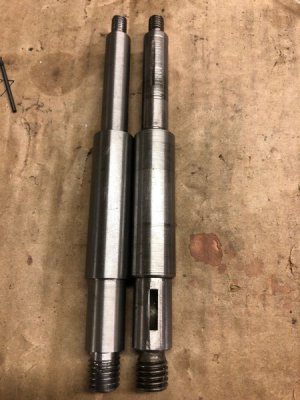I call it my first real project that has to fit.So I give myself big C on this since the first shaft was way undersize and this one is little undersized but I can correct it with bushings.In couple previous post I had ask about getting that perfect finish then another post of feed/speeds then a 3rd on live centers which thanks to ya'll got lot of good answers.So in the pic I was trying to copy the old shaft but wanting the OD's to fit perfectly for couple gears which one has a woodruff key and the other has a bushing which I will press in and hope it fits the shaft better than what it does just by itself.Na guys I use a die for the threads,which that will be another big lesson for me in future.Guys I need to cut couple woodruff keys in this shaft with mill but again this be first for me and I am clueless on woodruff key cutters.How does a person measure these woodruff key slots so that the correct woodruff cutter can be order?I can measure the width but I don't know about the diameter.Any good sources for these cutters?



